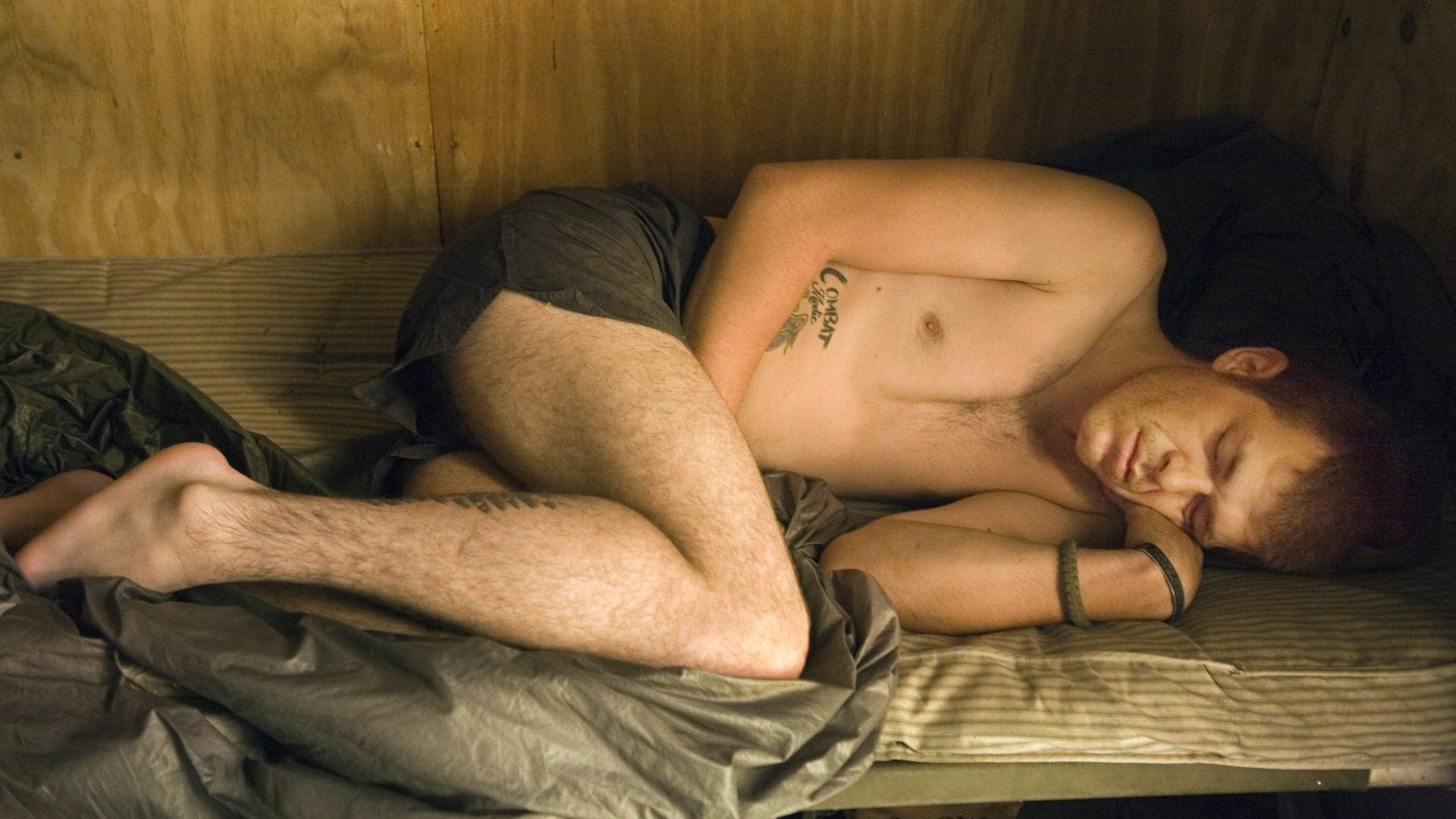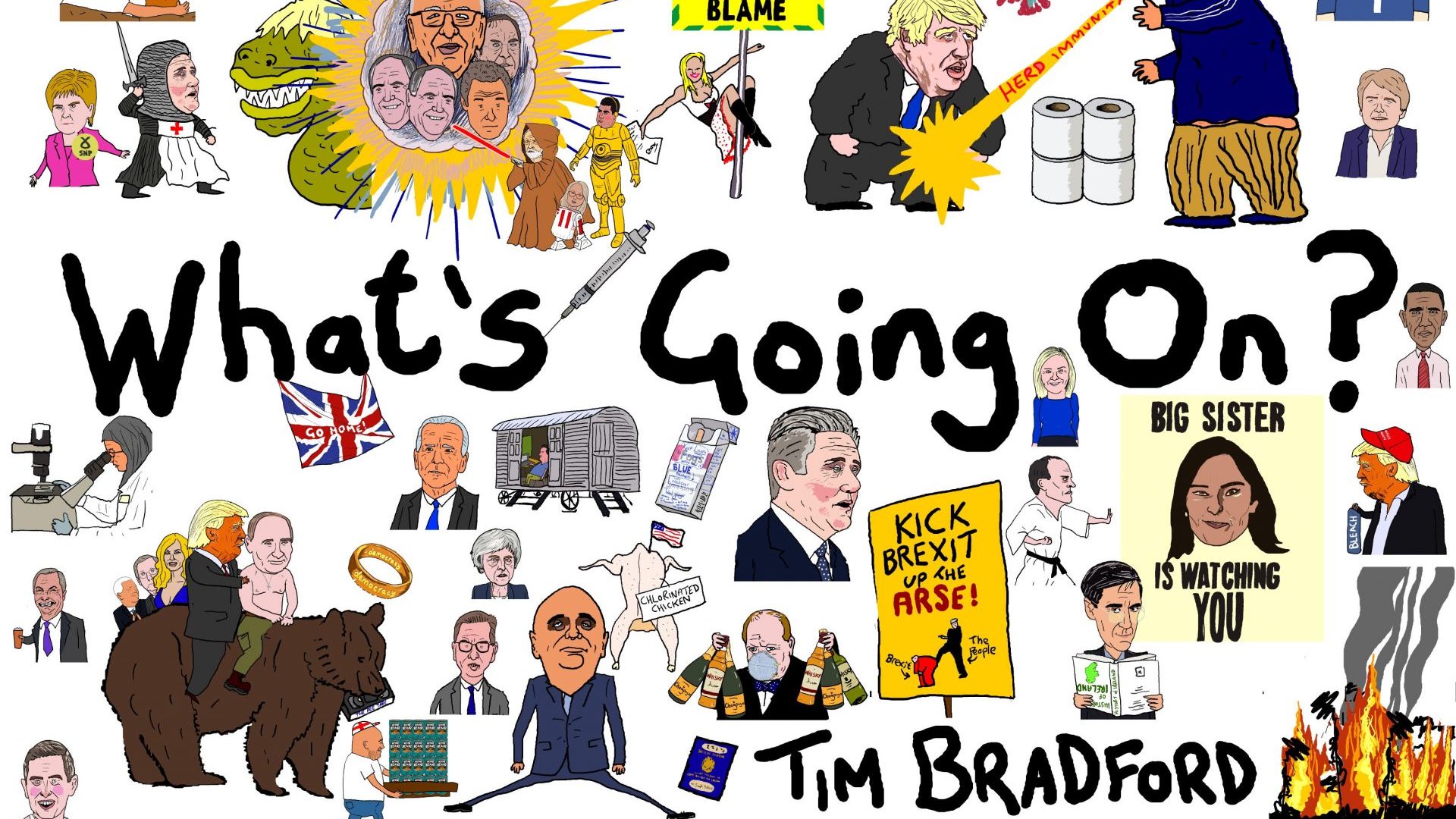To say that Tim Hetherington was a war photographer is reductive. The term conjures up images of a brave photojournalist jetting from warzone to warzone, capturing scenes of fighting, of gunfire – Kirsten Dunst’s character in Alex Garland’s current blockbuster, Civil War, perhaps.
Hetherington did not spend just weeks in warzones before moving on to new assignments. He would return to the same places over several months or years, documenting what happens long after the world’s gaze moves on.
And rather than helicopters or rifles, his work focused much more on the human element of conflict, developed through forming deep connections with those whose trust he gained.
It is this unconventional approach that makes an exhibition of his work at IWM London, 13 years after his death in Libya at the age of 40, so compelling. Hetherington takes the viewer to the frontline, but by focusing on those who take part in conflict – and those affected by it – it is as much a study of the human condition as it is a traditional narrative.
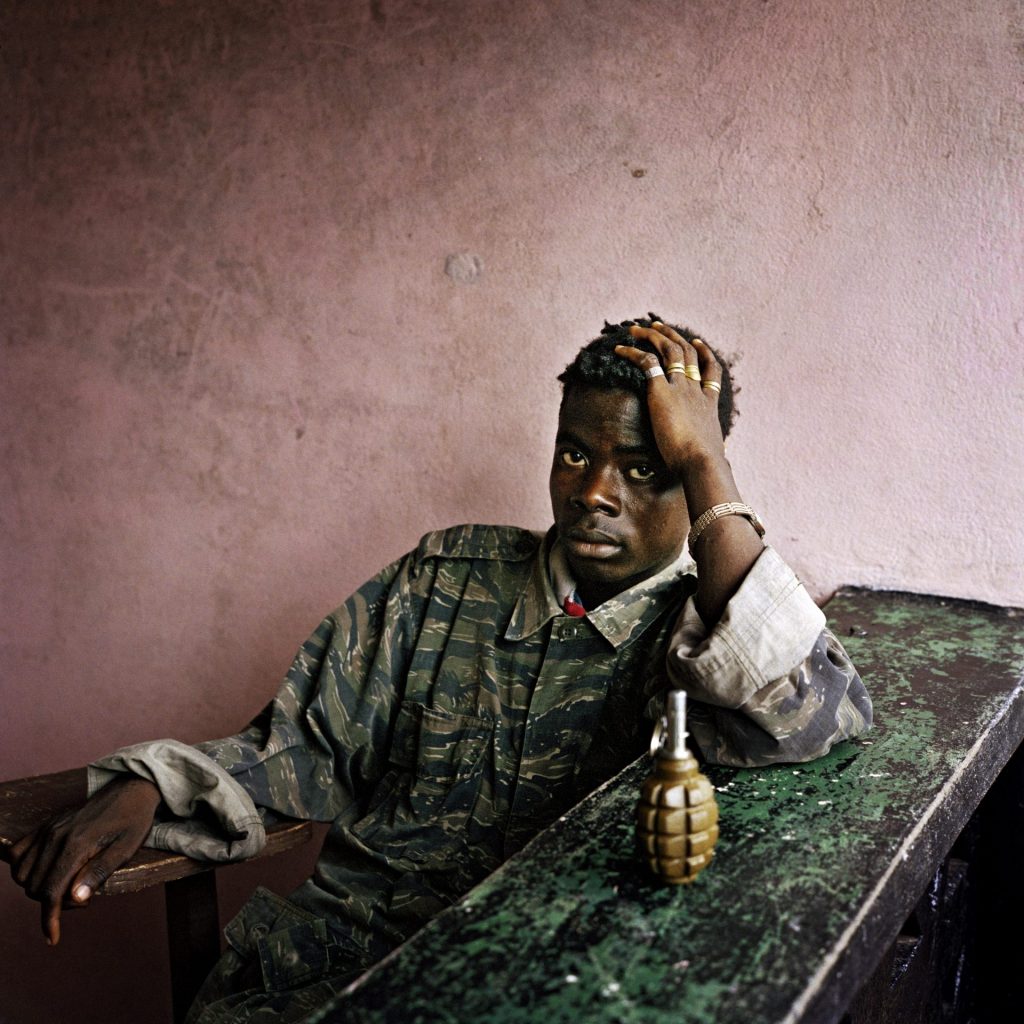
Democracy (LURD) combatant in Liberia, June 2003. On
display in Storyteller: Photography by Tim Hetherington at
IWM London (20 April to 29 September 2024)
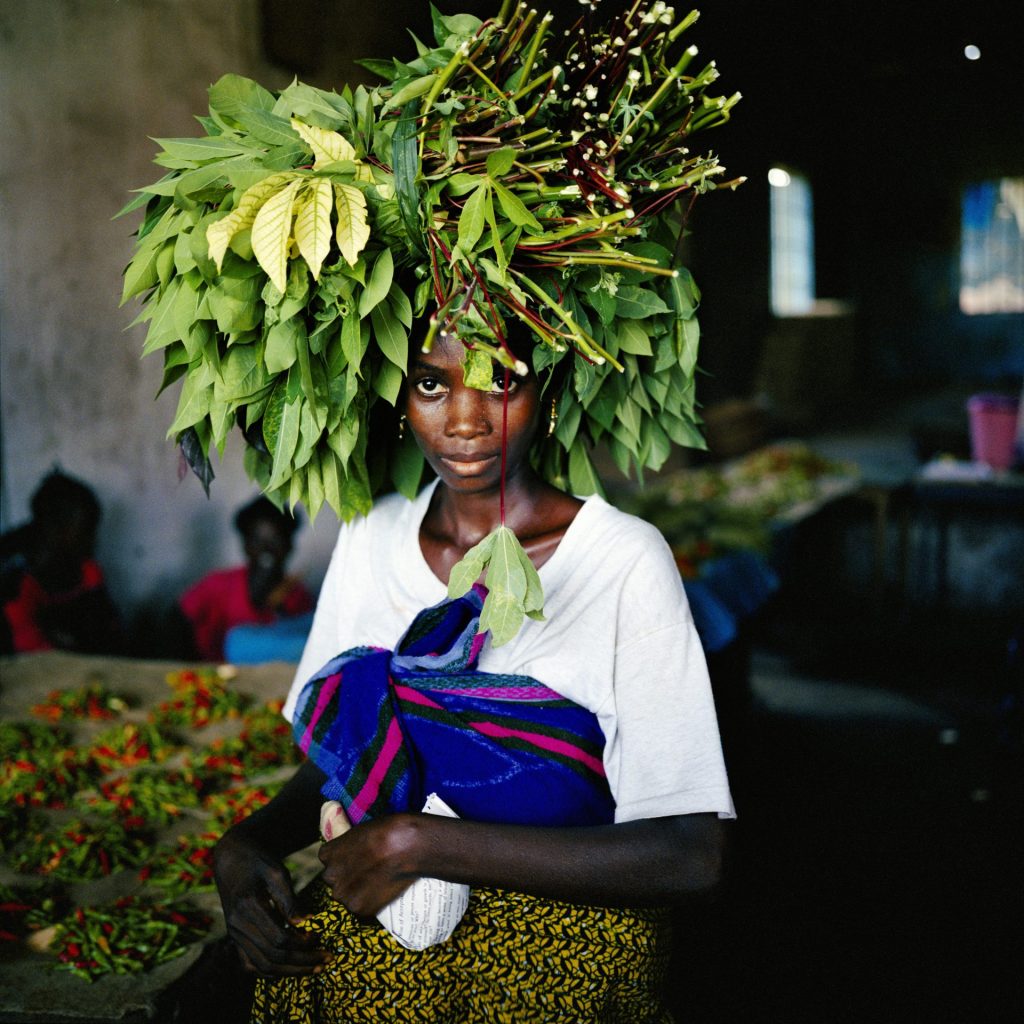
to the central market in Tubmanburg, Liberia, May 2003. On
display in Storyteller: Photography by Tim Hetherington at
IWM London (20 April to 29 September 2024)
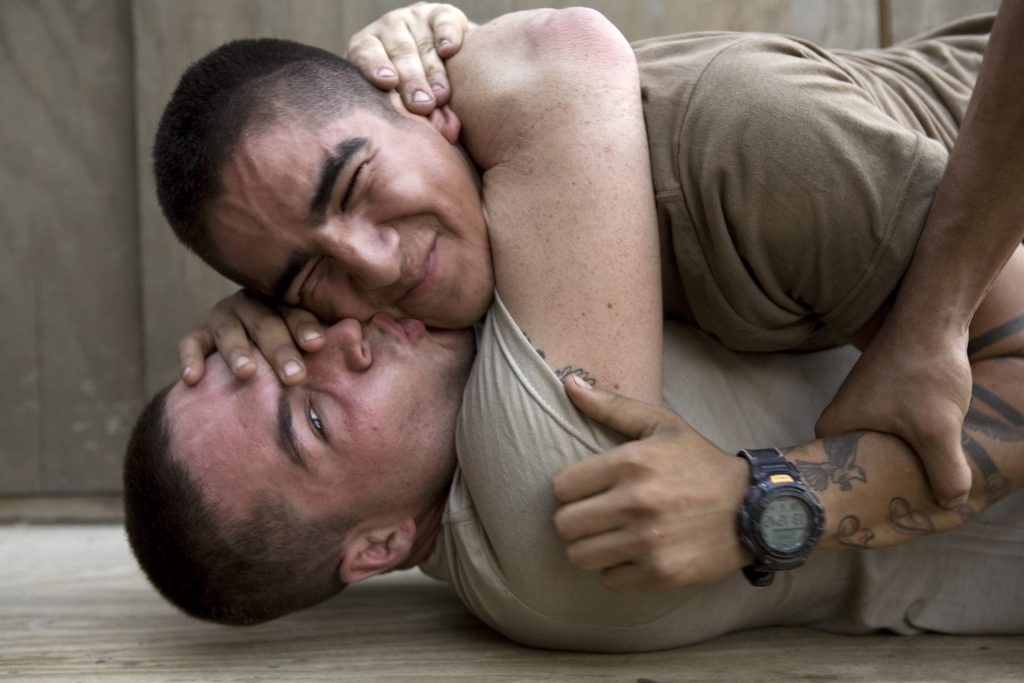
173rd Airborne Brigade during a 15-month deployment in the
Korengal Valley, Afghanistan, June 2008. On display in
Storyteller: Photography by Tim Hetherington at IWM London
(20 April to 29 September 2024)
“He described it as the hardware and the software,” says Stephen Mayes, a friend and colleague of Hetherington and now director of the Tim Hetherington Trust.
“Most of the news coverage we see is the hardware of war – uniforms, guns, bombs, all the rest of it. He said what drives it is the software, and the software is the man, and I’m a man. I am part of the software which drives this. How does this work? That’s what we need to be curious about.”
It is the IWM’s acquisition of Hetherington’s full archive from the Trust which has allowed Storyteller: Photography by Tim Hetherington to happen. In 2017 it acquired around 20,000 photographs, negatives, diaries and pieces of equipment and the result is something which showcases his projects in Liberia from 2003 to 2007, Afghanistan from 2007 to 2008 and his final, unfinished project in Libya.
Shortly after graduating from Lady Margaret Hall, Oxford, where he read Classics and English, Hetherington received £5,000 from his grandmother’s will, which enabled him to travel for two years.
“That’s when his imagination opened up and he really became curious… and he started pulling this thread,” says Mayes.
“And it took him to Africa, because he was curious and didn’t know very much about it, and he suddenly sees these scars of war everywhere. And wars nobody was talking about or was aware of in the global north. And again started pulling that thread.”
His first visit to a warzone was the closing months of the Second Liberian Civil War, alongside journalist James Brabazon. Rather than seeking to report on the conflict in a traditional, contemporaneous news fashion, however, he focused on the lives of the young soldiers he spent significant time with, covering every nuance of their behaviour (and young means young – visitors will be struck sharply by both sides’ use of child soldiers).
“And that was his first taste of it,” says Mayes. “As he developed that area, he wasn’t a conflict photographer in the sense of, he wasn’t chasing conflicts around the world.
“What he found was there were characteristics and behaviours which were apparent in conflict in a more exposed, more raw way, which is why it became interesting to him. Not the conflict itself, but more like, ‘why is this happening?’. And that matured over the years to quite a rarefied level.
“Just before he died I talked with him and we talked about masculinity. We were saying how war was gendered, it’s essentially, ‘I’m a man. I go to these places, I’m interested in them’. Why is that? What is it about being male which makes war more interesting?
“And that became a more internal journey in a way. So these pictures of all these conflicts out in the world was a way of him interrogating his own draw to it. In the hope of finding out what’s the fuse which lights all this, how does conflict arise?
“And he ends up in this position – which was still in development, of course – this notion that conflict is very much about older men instrumentalising younger men to fulfil their ambitions. And so his interest in war became more and more intense, but not in the kinetic activity of war as much as the spark.”
What is also stark is how many of Hetherington’s subjects are looking directly into the lens – portraits of people whose trust the photographer has clearly won.
“The reason why people were so fond of him, the reason why they opened up to him, is the same: he was intensely curious.” says Mayes. “And he was very genuine. So I think that curiosity was really what drove him.
“And to my mind, as someone who’s worked in the media for too many years, I’m quite cynical about a lot of journalism which is written before the journalist leaves the newsroom, how agendas are written by editors and photographers have to go out and illustrate them. And Tim was born of curiosity, he was actually, ‘what am I Iooking at? What am I seeing?’”
Another section of the exhibition, Sleeping Soldiers, was the result of time the photographer spent embedded with the US Army’s 173rd Airborne Brigade at a small and isolated outpost called Restrepo in Afghanistan’s Korengal Valley from 2007. The focus is on the young soldiers during times of tension, fear and, indeed, boredom. And the centrepiece is what the title says – a series of images of them asleep.
“It looks like reportage, it’s made with a 35mm camera, they haven’t got lights, it’s not set up, it’s reportage,” says Mayes. “But it’s a meditation. It’s not news. It’s not ‘soldiers sleep’ – OK, we knew that. But what you end up with is this meditation about aggression, vulnerability, these men appearing as they would have done to their mothers, half-naked and asleep and vulnerable. He tried to explore ways of testing his curiosity and expressing his curiosity in more powerful ways, in some ways subverting the media.
“He’s often thought of as a war photographer. The pictures are war photography – the sleeping soldiers were made in war – but it’s not about war, it’s about the software, it’s about what’s driving this.
“And not in an idealistic sense of hoping to stop war, because I think he was a realist, but more in the sense of, if we could understand this better, we might be able to manage it better.”
At a time of conflict – in the Middle East, Ukraine, Sudan – it’s tempting to speculate on where in the world Tim Hetherington would be now, although, as Mayes says, “at the time he died he was falling in love”.
“What he would be doing now… James Brabazon said to me once his two most feared words were ‘Tim would’,” he says. “Because we have no idea.”
The exhibition features a digitised version of the journal Hetherington kept diligently. On April 19, 2011, covering those fighting Libya’s civil war, he wrote: “They are grimly happy that we are here to help them. They feel now that the whole world can see.” He was killed the next day.
Storyteller: Photography by Tim Hetherington is at IWM London until September 29


